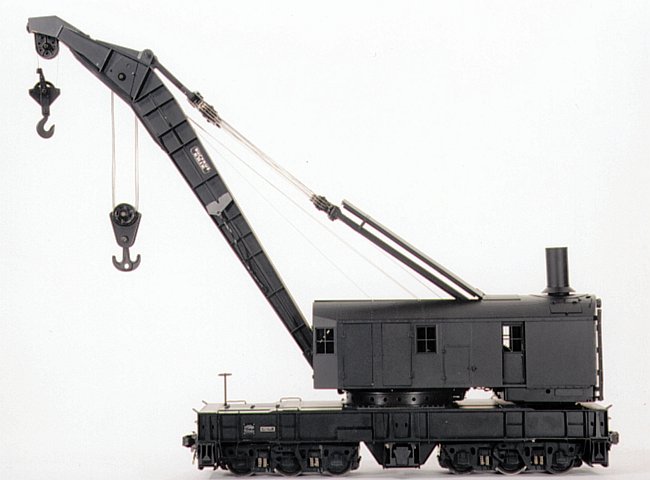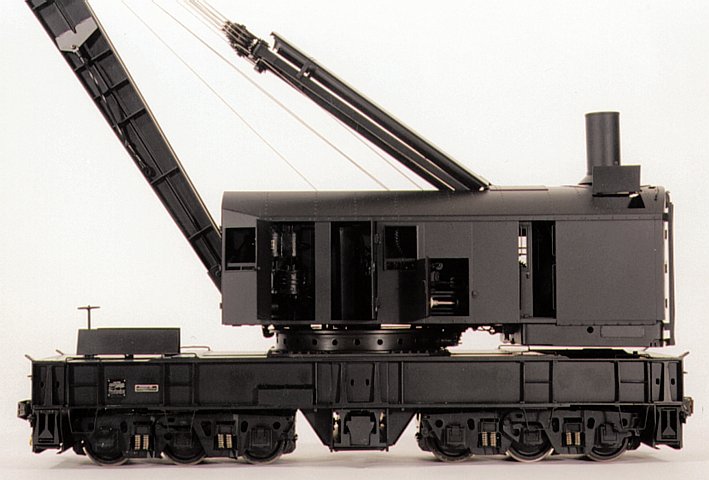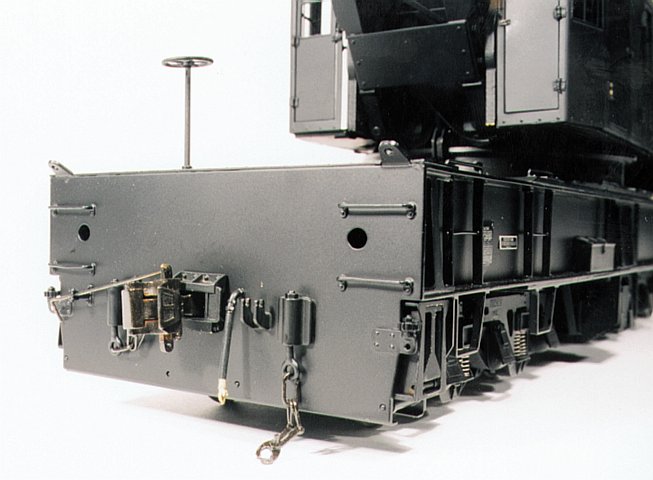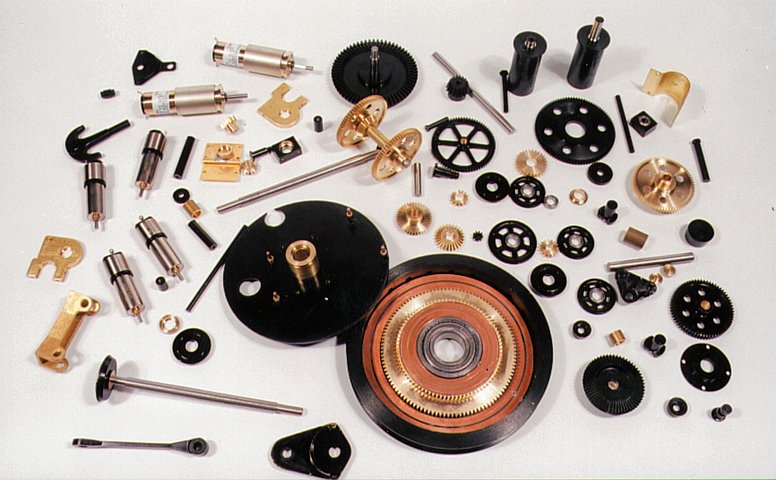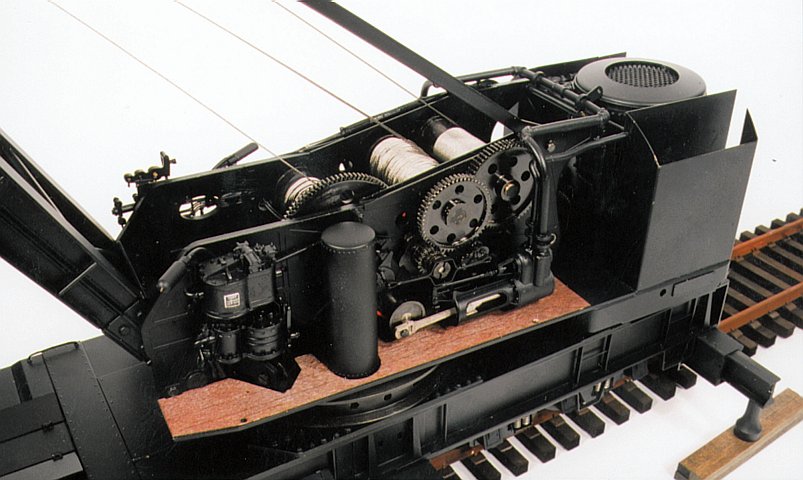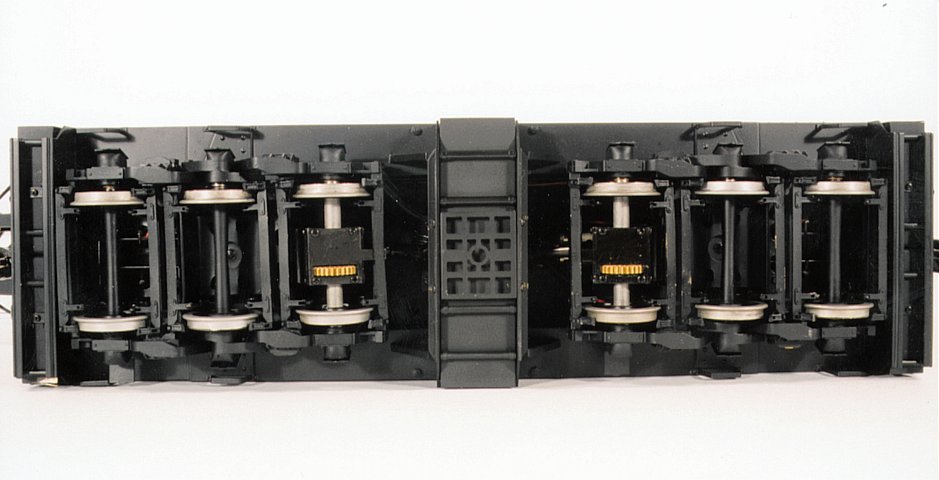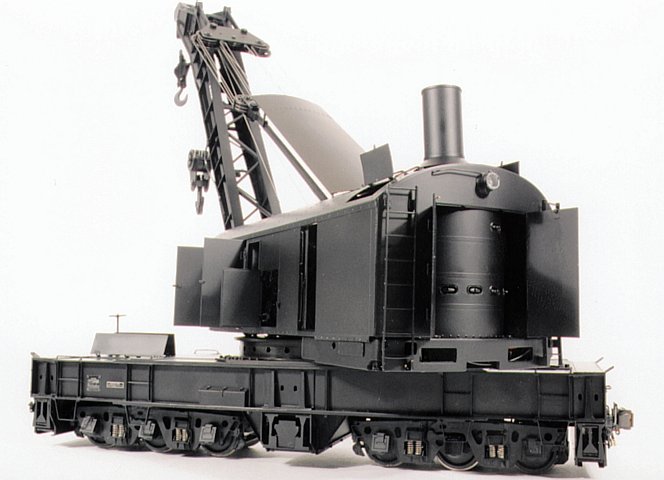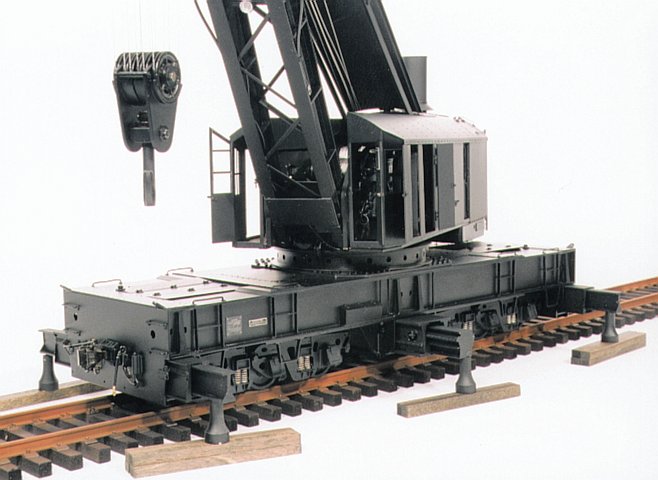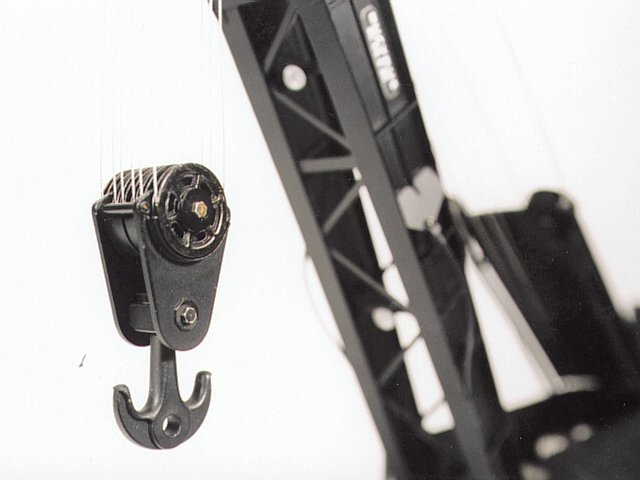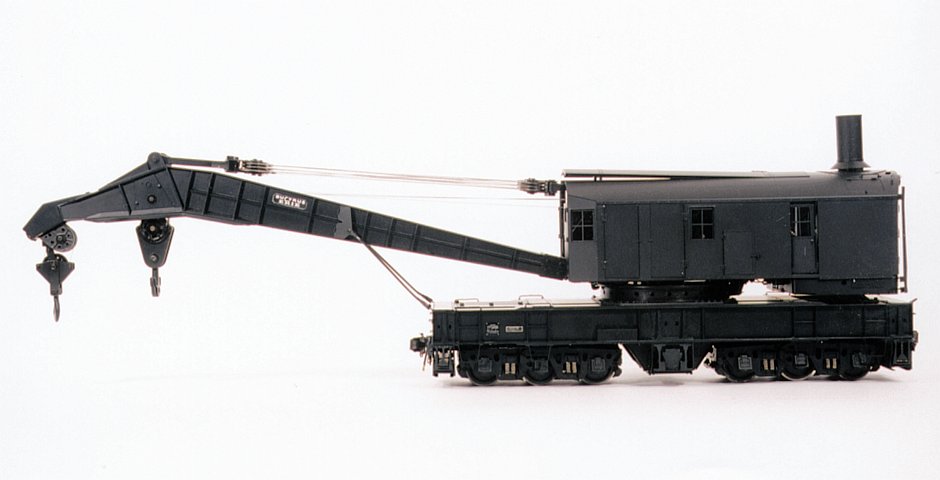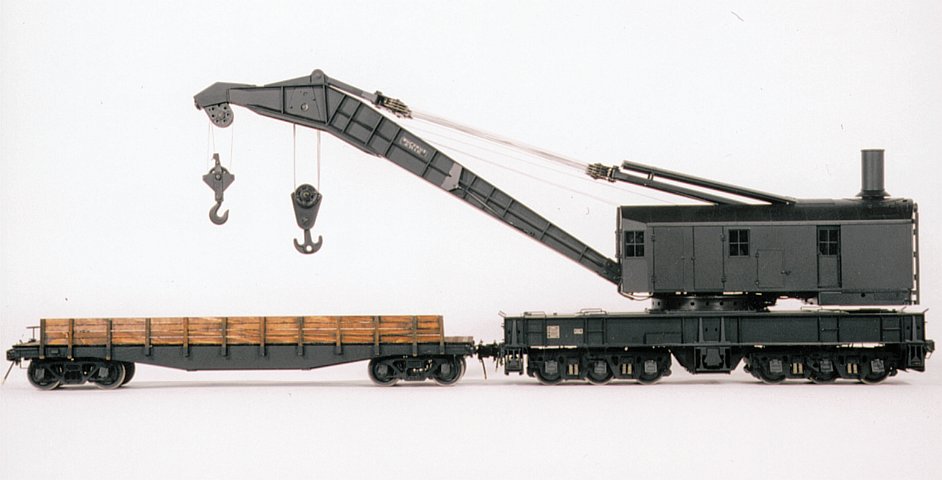Crane
Bucyrus-Erie Railway Crane
- Scale: 1:32
- Release: 1996
- Limited Edition: 139
- Model Size: 30”L x 5”W x 8”H lowered
- Base Type: Mahogany
- Base/Case Size: 34”L x 9”W x 13”H
- Availability: Please call or email for availability
Bucyrus-Erie Railway Crane
The Bucyrus-Erie Railway Crane was designed and built for the construction of the Panama Canal in the early 1900s. From this use, the crane was discovered by the major railroads for cleaning up wrecks and lifting heavy loads to and from flat cars.
Fine Art Models
Fine Art Models spent two years developing this locomotive with the intention of making it a benchmark model from a technological point of view. While we knew we could build the model with no compromise in detail (e.g. all doors and hatches open and all detail can be found in the appropriate locations behind these doors and hatches), the question remained whether we could build it to function just as well. Our answer is a very proud and resounding YES!
Our crane has our third generation sound system with all the noises of a real steam operated crane. It also has a lifting whistle, which must be blown before a load is lifted. The model is digitally controlled via signals sent through the rails from the control box. Encoders located in the crane read the signal and the desired function occurs. The crane can move forward and backward, raise and lower its two lifting hooks, and raise, lower and rotate the boom. And the boom work-lights can be turned on and off from the same control box.
Perhaps the most ingenious feature of this crane is, that when any function takes place, the twin steam pistons function and the gear assemblies rotate – just as they did on the real crane (the winding drums are operated by miniature Swiss-made motors located inside the drums). The traction motors for the carriage are all in their correct locations.
To enable the crane to lift loads, the chassis has been made from a solid piece of billet brass. When lifting light loads, the crane can be anchored to the rails with the use of special clamps. When lifting heavy loads, outriggers (in the center and at the ends of each platform) all telescope out. In addition, six jack screws, positioned on timbers, stabilize the crane. Our model comes with all of these accessories.
At every wreck site, you would see service flatcars with wheelsets, waiting to be replaced on the derailed cars. An optional flatcar is available with our Crane Model. When at a wreck site, the crane was expected to lift everything from freight car trucks (for replacement on wrecked cars) to locomotives. In between, there were freight cars, passenger cars, and anything else that rolled on the rails. Each item lifted required different attachments and rigs. In addition, to move the crane to the site, a boom car was required to take up the space occupied by the boom. Often called an idler car, this also served as a place for storing the lifting equipment required at the wreck site. We have included all of these accessories with our model, including a manual on how to use each of them.
Although many railroads used these cranes, we built our locomotives with two distinct markings: one version has Pennsylvania Railroad markings and one version has black Bucyrus Erie markings. Each model comes with an electrified mahogany display base (the crane can be set-up to operate on this base) and leaded glass case.
